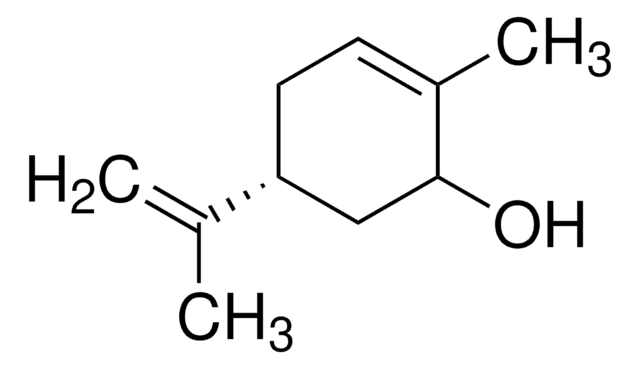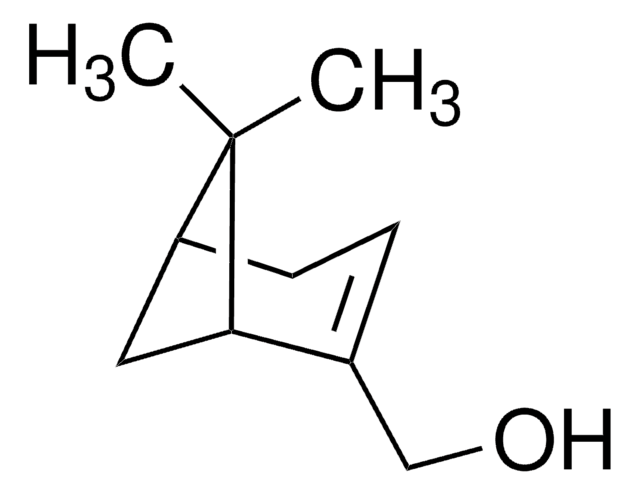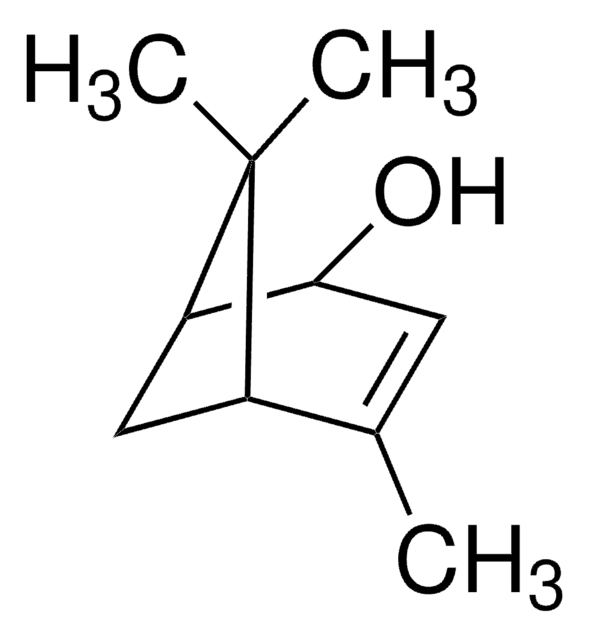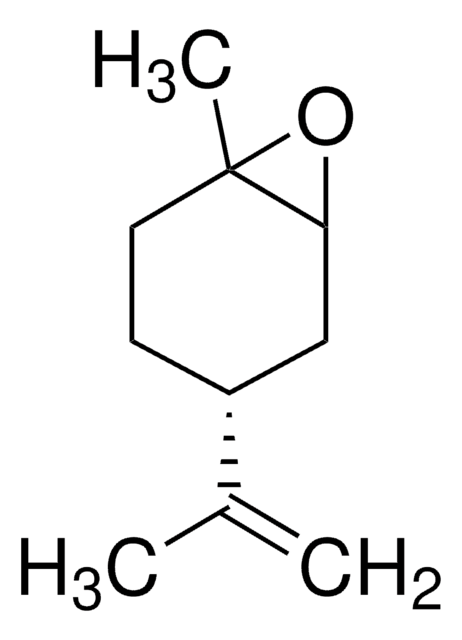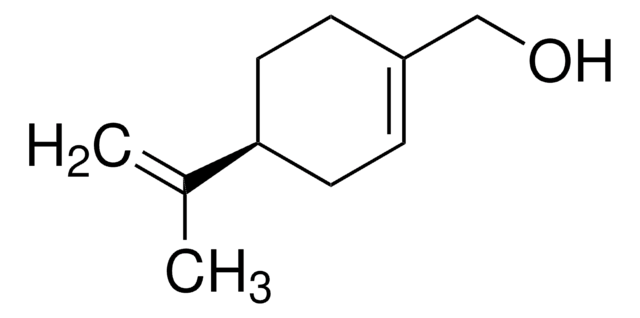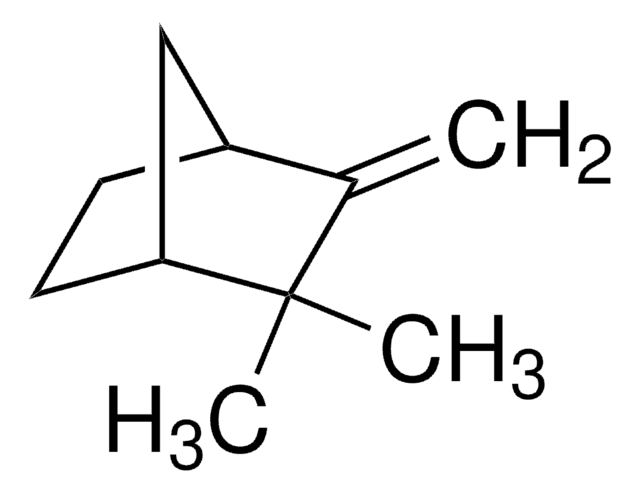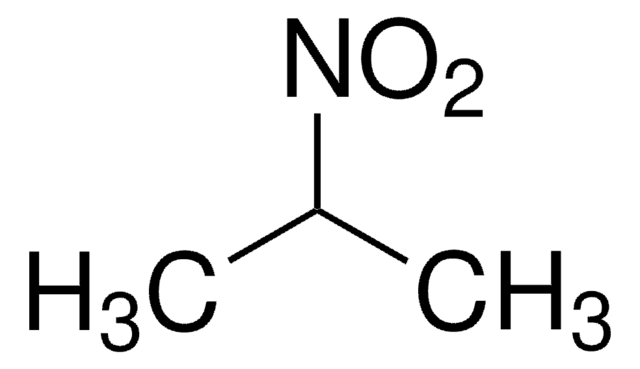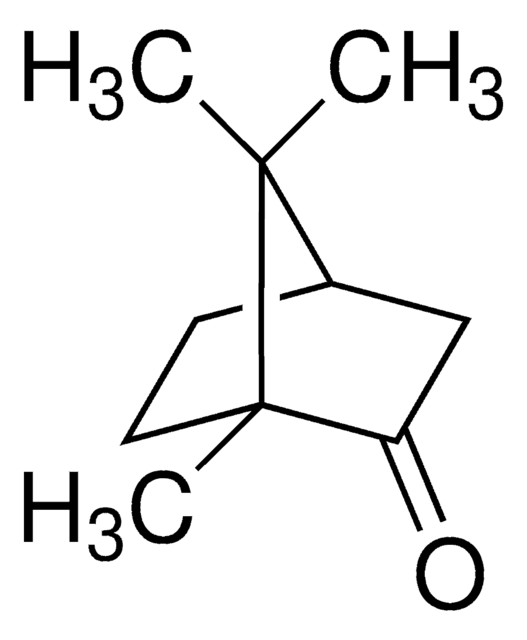推荐产品
质量水平
方案
97%
旋光性
[α]20/D −112°, c = 1 in chloroform
折射率
n20/D 1.496 (lit.)
沸点
226-227 °C/751 mmHg (lit.)
密度
0.958 g/mL at 25 °C (lit.)
官能团
hydroxyl
SMILES字符串
CC(=C)[C@@H]1CC=C(C)C(O)C1
InChI
1S/C10H16O/c1-7(2)9-5-4-8(3)10(11)6-9/h4,9-11H,1,5-6H2,2-3H3/t9-,10?/m1/s1
InChI key
BAVONGHXFVOKBV-YHMJZVADSA-N
正在寻找类似产品? 访问 产品对比指南
警示用语:
Warning
危险声明
危险分类
Eye Irrit. 2 - Skin Irrit. 2 - STOT SE 3
靶器官
Respiratory system
储存分类代码
10 - Combustible liquids
WGK
WGK 2
闪点(°F)
208.4 °F - closed cup
闪点(°C)
98 °C - closed cup
个人防护装备
Eyeshields, Gloves, type ABEK (EN14387) respirator filter
Imran Malik et al.
Frontiers in neuroscience, 14, 659-659 (2020-07-28)
Ischemic stroke is a severe neurological disorder with a high prevalence rate in developed countries. It is characterized by permanent or transient cerebral ischemia and it activates syndrome of pathological events such as membrane depolarization, glutamate excitotoxicity, and intracellular calcium
Moshe Parnas et al.
Cell calcium, 45(3), 300-309 (2009-01-13)
Transient receptor potential (TRP) channels are essential components of biological sensors that detect changes in the environment in response to a myriad of stimuli. A major difficulty in the study of TRP channels is the lack of pharmacological agents that
Mitsuo Miyazawa et al.
Chemical research in toxicology, 15(1), 15-20 (2002-01-22)
(+)-Limonene is reported to cause nephropathy in male rats, but not in female rats and other species of animals including mice, rabbits, guinea pigs, and dogs. Male rats contain high levels of alpha2u-globulin in kidneys, and it has been shown
Jenna L E Morrish et al.
Biotechnology and bioengineering, 101(5), 946-956 (2008-06-12)
In an effort to improve reactor performance and process operability, the microbial biotransformation of (-)-trans-carveol to (R)-(-)-carvone by hydrophobic Rhodococcus erythropolis DCL14 was carried out in a two phase partitioning bioreactor (TPPB) with solid polymer beads acting as the partitioning
Tomoko Iizuka et al.
Drugs in R&D, 11(2), 191-205 (2011-06-18)
In Japan, when pharmaceutical companies launch a new drug, they are obligated to conduct a post-marketing survey to evaluate the safety and efficacy of the drug in accordance with Good Post-Marketing Surveillance Practice under Article 14-4 (re-examination) of the Pharmaceutical
我们的科学家团队拥有各种研究领域经验,包括生命科学、材料科学、化学合成、色谱、分析及许多其他领域.
联系技术服务部门